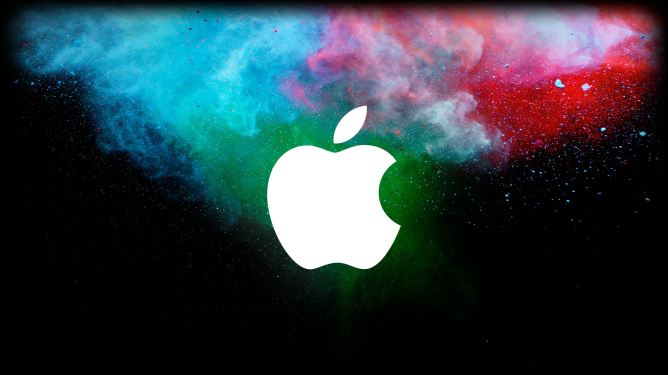The iPhone rumor season is upon us — as if it ever ends — and the latest claims that the next iPhone will cost upwards of $1000 (at least, for the most expensive model). To be clear, that isn’t a huge deal considering that the top-of-the-line iPhone currently costs more than $900. Still, Fast Company reportsthat Apple may be switching from LCD displays to an OLED display, which would cost the company more to make the phone. The report also cites sources as saying that the memory in the next iPhone will be upgraded, another contributing factor to the rising cost. This forthcoming phone represents 10 years of the iPhone, leading many to believe that Apple may call it ‘iPhone X.’ Rumors suggest that the next flagship iPhone will measure in at 5.8 inches, which is a bit bigger than the iPhone 7 Plus.
Diverging a bit from the current strategy, the next iPhone is said to be released alongside two models that are the same size as the iPhone 7 (4.7-inch) and iPhone 7 Plus (5.5-inch), which will likely be called the iPhone 7S and iPhone 7S Plus respectively. Trusted KGI Securities analyst Ming-Chi Quowrote late last yearthat only the iPhone 8 (or iPhone X) will come with the new OLED display. Along with the new display and the bigger size, rumors suggest that the back of the phone will be made of glass, and that the sides of the phone will be made of stainless steel instead of aluminum. But perhaps more exciting is that Apple may be ditching the Home button, placing it under the display for a fully touch interface. In fact, sources are claiming that the next iPhone may not have any physical buttons, instead using touch-sensitive portions of the screen to replicate button functionality.
Switching to an OLED display would indeed increase production costs due to the higher brightness and contrast ratios required for such screens compared to traditional LCD technology. Additionally, OLED panels often require more power to operate, which can further escalate costs as Apple needs to ensure that their batteries can handle this increased power consumption. The transition also carries risks related to compatibility with existing infrastructure, such as the types of displays used in older models and how well new software will need to adapt to these changes.
The price increase is likely a response to several factors: higher material costs for OLED screens, potential design iterations that could alter the final product, and possibly even strategic moves to differentiate the next iPhone from current models. Apple may also be considering market positioning — perhaps aiming to appeal to a slightly different demographic or customer base than what it currently serves.
In terms of hardware upgrades, rumors suggest that the memory capacity in the next iPhone will be increased. This could mean more storage options, faster performance due to improved chip architecture, and enhanced features like better camera capabilities or longer battery life. However, there is uncertainty around how exactly this memory upgrade will manifest — whether it’s through additional RAM slots, higher-density storage materials, or other technological advancements.
The suggestion that the next iPhone models (7S and 7S Plus) will have glass on the back is interesting because it would mark a departure from Apple’s trend of using stainless steel for its newer iPhones. Glass offers a more modern aesthetic but also raises concerns about durability and maintenance — for instance, repairs would be more complex if the glass is broken or stained. Stainless steel, while still a premium material, has been consistently used in recent iPhone models due to its scratch resistance and smooth texture.
The use of stainless steel on the sides could also be part of an effort to balance aesthetics with practicality. By not using glass on the sides, Apple might be avoiding potential costs associated with manufacturing curved stainless steel panels or ensuring compatibility with existing assembly lines that rely on standardized materials. This design choice would also align more closely with past iPhone models, which have always featured aluminum alloy bodies.
The rumors about the next iPhone not having buttons — a move that could eliminate both physical and virtual buttons in favor of purely touch-based interactions — is intriguing for several reasons. First, it would streamline the user interface, making navigation more intuitive. However, this design choice might also affect battery life since users would need to make quicker gestures or longer presses depending on how Apple wants to define "interacting" with the phone.
Additionally, removing buttons could simplify maintenance and repair processes, as there are fewer components that could potentially become loose or damaged over time. This might be part of a broader trend in technology towards more minimalist designs, especially in smartphones where space is at a premium. However, Apple’s track record on minimalism has been mixed, with the introduction of Face ID in recent models representing both an evolution and a return to traditional aesthetic elements.
The suggestion that the next iPhone models could feature glass on the back ties into broader discussions about smartphone design trends — such as increased screen size, taller aspect ratios, and curved displays. These changes would require significant investments in manufacturing capabilities, software updates, and user support. Apple may be weighing the potential returns of these investments against the risks associated with maintaining a premium product line.
Another point of discussion is whether any of these rumored features will actually materialize. For instance, while the transition to an OLED display could drive up costs, there are alternative technologies that Apple could explore if OLED doesn’t pan out — such as blue light-emitting diodes (LEDs) or other materials that offer similar brightness and contrast without the same production challenges.
Furthermore, the potential removal of buttons raises questions about how this will affect existing iPhone users. Will they need to adjust their habits to accommodate a more touch-based interface? How might Apple position this change in terms of marketing — as an evolution towards more intuitive design or simply part of its long-term strategy?
In conclusion, while the rumored features and price increases for the next iPhone are speculative, they reflect broader trends in smartphone technology: increasing size, enhanced capabilities, potential material changes, and shifts in design aesthetics. Apple’s decision to explore these options will likely be influenced by a combination of market demand, technological feasibility, and internal strategic priorities. As the rumor season continues, fans of the iPhone will undoubtedly want to stay closely attuned to any developments that could shape the future of this iconic device.




